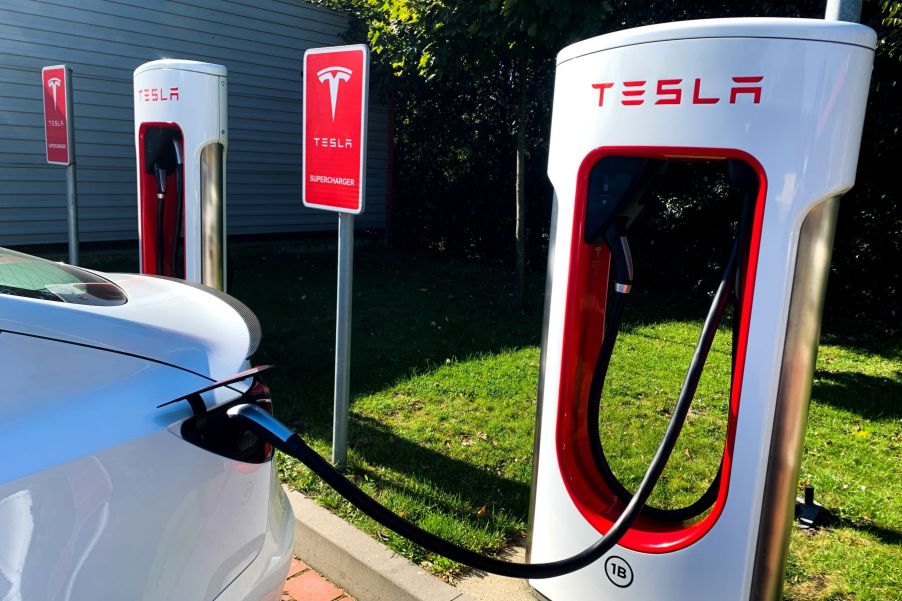
Can Non-Tesla Electric Vehicles Charge at Tesla Charging Stations?
You might think you need to have a Tesla to charge your electric vehicle at a Tesla station, but that is not the case. Tesla Superchargers are being outfitted with Tesla’s new Magic Dock adaptor that will allow the Ford Mustang Mach-E and other non-Tesla electric vehicles. The EV maker is working on opening up the Tesla supercharger network to make widespread electric car adoption easier, but only a few states have these chargers for now. Rivian recently announced a collaboration with Tesla, promising Rivian charging at Tesla Superchargers around the country.
Can non-Tesla electric vehicles use Tesla Superchargers?

Can other cars use Tesla chargers in North America? Yes, Tesla has Magic Dock-equipped chargers in a few states now, namely, New York, Connecticut, and California. The automaker is working on building new chargers and equipping current chargers with this updated technology. However, it is not everywhere yet.
Most useful for EV drivers and owners will likely be Tesla destination chargers, most commonly found at hotels, parks, shopping centers, and similar destinations. These probably won’t allow for non-Tesla charging anytime soon unless Tesla goes around and updates those chargers as well. Read more about the Tesla Magic Dock here.
As of June 2023, the Magic Dock Tesla Superchargers are only in New York, Connecticut, and California. Non-Tesla electric vehicles can charge at these stations.
The Tesla Supercharger network is opening up to non-Tesla electric vehicles
The Tesla Supercharger network has been expanding rapidly in recent years, but Tesla EVs have always had better access. It also means that Tesla EVs can generally take longer trips. Thanks to the placement of the Supercharger network, cross-country travel is possible.
The White House has also been working on the electric vehicle charging infrastructure. In a recent press release, The White House confirmed Tesla would be “expanding production capacity of power electronics components that convert alternating current to direct current, charging cabinets, posts, and cables.” The White House also confirmed that Tesla would add new Supercharger equipment to enable non-Tesla electric vehicles to charge up at these stations.
Tesla recently announced that Rivian vehicles will be able to charge on the Tesla Supercharger network. Rivian is working on making an adaptor for the Tesla Supercharger, aiming for a Spring 2024 release date. Both automakers have also agreed to use universal charging products on future vehicles, making adapters obsolete.
How much does it cost to install an electric car charger in your home?
The prices of a home EV charging station installation can vary widely depending on the setup. One of the first concerns is the age of the residence and the electric and wiring status beneath the walls. A home charger might require a big update if your home has an older electric situation. Newer builds might be better equipped without much work.
If your house is newer and can handle a charger’s additions, you can generally get Level 1 charging with just a standard plug (12 amps). You can usually get enough to drive your car around the next day with an eight-hour charge. If you drive your EV more and need faster-charging capabilities, Level 2 charging with at least 40 amps is the most popular option. However, be aware that hiring an electrician will often be much more expensive than buying the charger itself, with the cost of parts and labor to roughly $2,000.
Driving a non-Tesla electric vehicle is becoming easier, but the process has been slow. It looks like 2024 will bring many updates and expansions for EV charging across the US.



